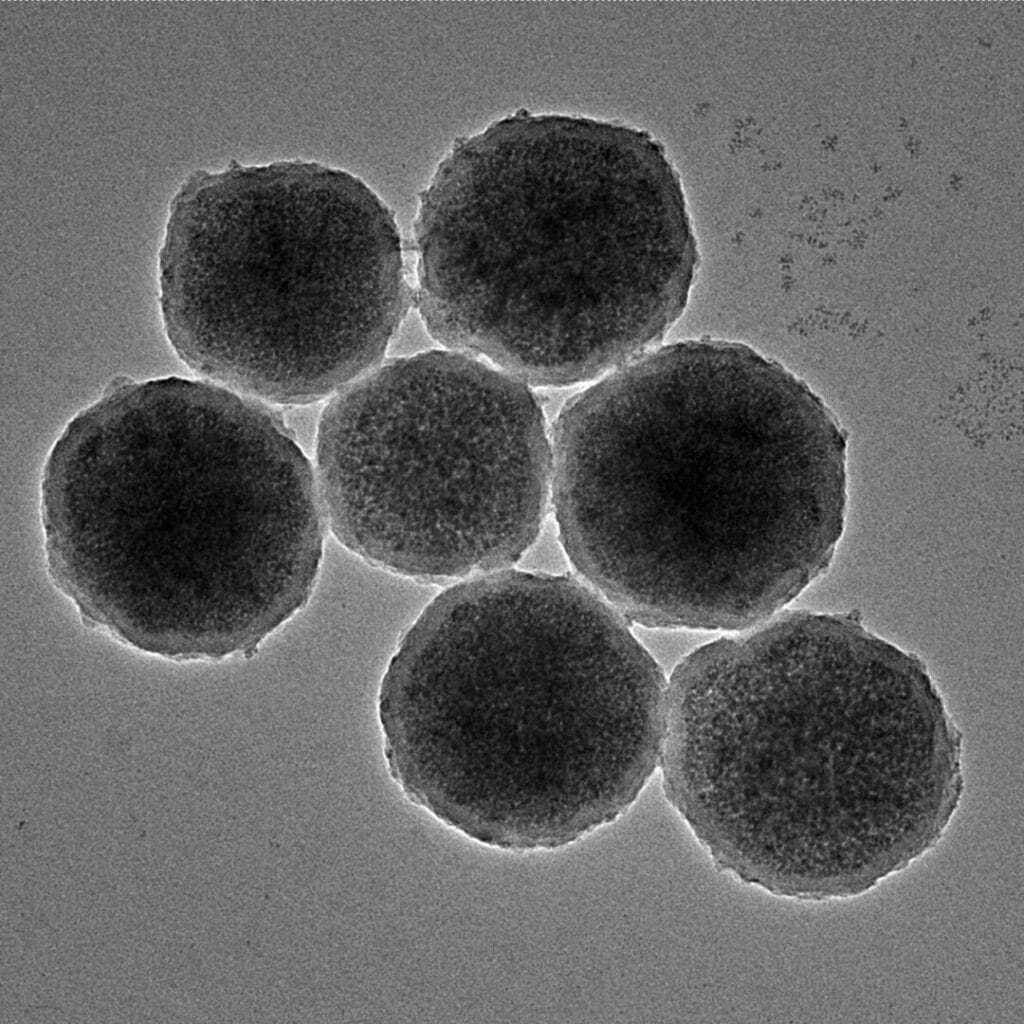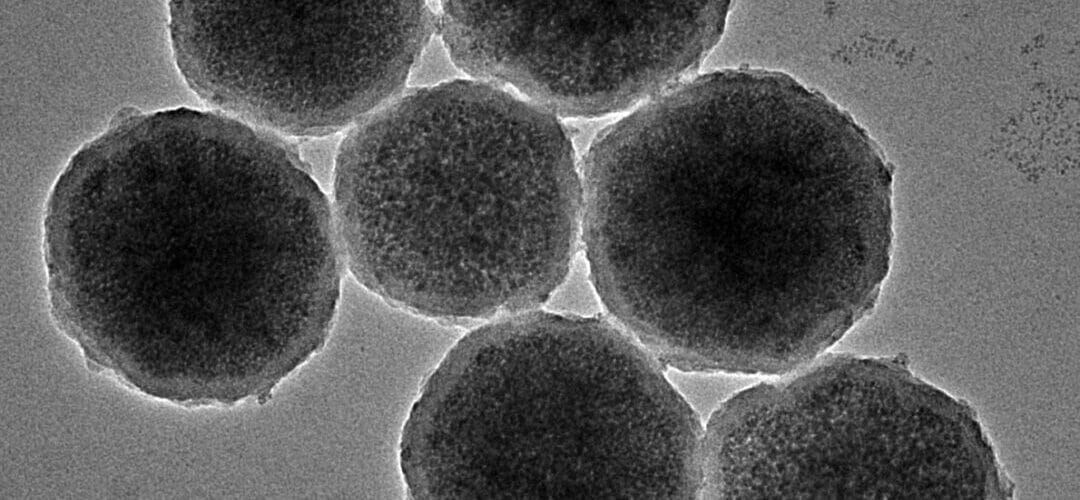The following report is a press release by The University of Edinburgh:
The development could enable precise, relatively low-risk treatment of brain aneurysms, which cause around 500,000 deaths globally each year. The medical condition – a blood-filled bulge on a brain artery that can rupture and cause fatal bleeds – can also lead to stroke and disability.
The study points to a future where tiny robots could be remotely controlled to carry out complex tasks inside the human body – such as targeted drug delivery and organ repair – in a minimally invasive way, researchers say.

Swarming Bots
The team, involving researchers from the University of Edinburgh, engineered magnetic nanorobots – about a twentieth the size of a human red blood cell – comprising blood-clotting drugs encased in a protective coating, designed to melt at precise temperatures.
In lab tests, several hundred billion such bots were injected into an artery and then remotely guided as a swarm, using magnets and medical imaging, to the site of an aneurysm.
Magnetic sources outside the body then cause the robots to cluster together inside the aneurysm and be heated to their melting point, releasing a naturally occurring blood-clotting protein, which blocks the aneurysm to prevent or stem bleeding into the brain.
Lab Trials
The international team, co-led by clinicians from Shanghai Sixth People’s Hospital affiliated to Shanghai Jiao Tong University School of Medicine in China, successfully tested their devices in model aneurysms in the lab and in a small number of rabbits.
The team says that nanorobots show potential for transporting and releasing drug molecules to precise locations in the body without risk of leaking into the bloodstream – a key test of the technology’s safety and efficacy.
The study could pave the way for further developments towards trials in people.
Promising Potential
Their advance could improve on current treatments for brain aneurysms. Typically, doctors thread a tiny microcatheter tube along blood vessels before using it to insert metal coils to stem the aneurysm blood flow, or a mesh tube called a stent, to divert the bloodstream in the artery.
Researchers say their new technique could decrease the risk that the body will reject implanted materials, and curb reliance on anti-blood-clotting drugs, which can cause bleeding and stomach problems.
The method also avoids the need for doctors to manually shape a microcatheter to navigate a complex network of small blood vessels in the brain to reach the aneurysm – a painstaking task which may take hours during surgery, researchers say.
Larger brain aneurysms – which can be difficult to stem quickly and safely using metal coils or stents – could potentially be treated using the new technique too.
The study, published in Small journal, was led by a team from the UK and China who have also developed nanorobots to remove blood clots, which show potential in treating stroke.
Nanorobots are set to open new frontiers in medicine – potentially allowing us to carry out surgical repairs with fewer risks than conventional treatments and target drugs with pinpoint accuracy in hard-to-reach parts of the body. Our study is an important step towards bringing these technologies closer to treating critical medical conditions in a clinical setting.
Dr Qi Zhou, Study co-lead, School of Engineering, University of Edinburgh.
AUTHOR COMMENTARY
Nah, I’m good… I’m already sketched-out by modern medicine and technology is, so I’m definitely pessimistic about this most definitely. Nevertheless, all “cures” and “treatments” moving forward involve advanced robotics and nanotech, such as mRNA among other examples.
Ecclesiastes 7:29 Lo, this only have I found, that God hath made man upright; but they have sought out many inventions.
[7] Who goeth a warfare any time at his own charges? who planteth a vineyard, and eateth not of the fruit thereof? or who feedeth a flock, and eateth not of the milk of the flock? [8] Say I these things as a man? or saith not the law the same also? [9] For it is written in the law of Moses, Thou shalt not muzzle the mouth of the ox that treadeth out the corn. Doth God take care for oxen? [10] Or saith he it altogether for our sakes? For our sakes, no doubt, this is written: that he that ploweth should plow in hope; and that he that thresheth in hope should be partaker of his hope. (1 Corinthians 9:7-10).
The WinePress needs your support! If God has laid it on your heart to want to contribute, please prayerfully consider donating to this ministry. If you cannot gift a monetary donation, then please donate your fervent prayers to keep this ministry going! Thank you and may God bless you.








Color me dead, first.
You will see more this stuff at rumble nonvaxer420 and Psinergy at Odysee. Nothing is new. Just using smartphone as remote, it controls you. Creepy.
Nothing can go wrong with this “trust me” LOLOLOLOLOL
Frankenstein might just be real, he he he.
If they can do repairs, they can also cause severe damages or mind control…
Exactly! Just like. Neuralink …. One press of the button and ciao!
Yeah, it was called cooovID and illegally undisclosed and administered to thousands with out their consent of what was in it.
Sounds like bloodclots
We can’t even trust doctors or medicines anymore cause we don’t know what are in them or if the doctor is telling us the truth. Sad world we live in